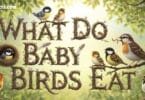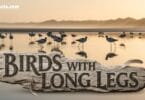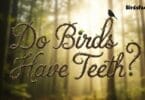Are Birds Mammals? A Definitive Answer. They are avians. They don’t have fur or hair like mammals. Instead, they have feathers. However, sometimes, their faces or heads can have bristles that look like hair. They are not mammals, even though they are warmblooded, breath air, and have vertebrae which are mammalian traits. Although some species may gather in groups for hunting, foraging, childrearing and protection, they are not mammals.
Only birds lay eggs . Some birds, such as chickens can lay eggs without the help of a male. However, those eggs are infertile. Birds cannot give birth live. While many birds are very protective of their young, there is one thing that makes them stand out: no bird gives its young milk like mammals.
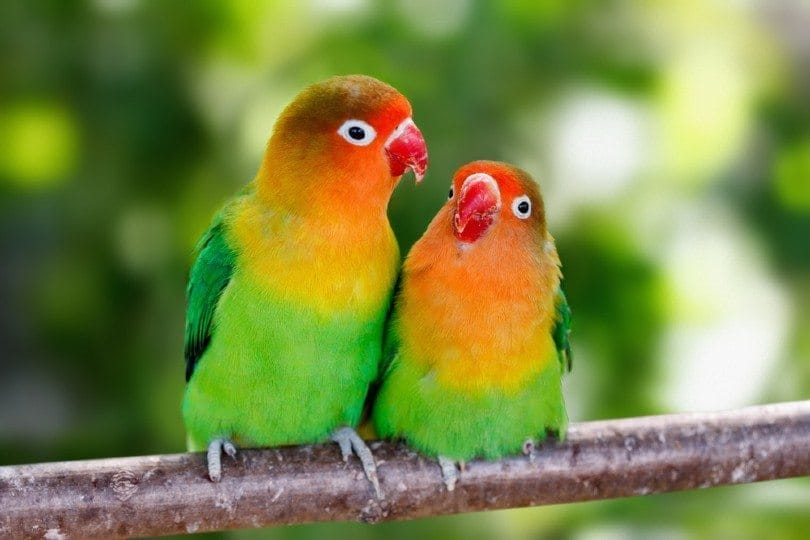
Are Birds Mammals?
Do Birds and Mammals Share Any Common Traits?
Avian characteristics
Birds are an astounding group of creatures with distinct features that set them apart from other species. One hallmark of bird characteristics is the presence of beaks and wings, which help facilitate flight. Their lightweight skeletal structures and powerful muscles also allow them to soar gracefully through the air.
Birds stand out among wildlife because of their distinct behavioral patterns and unique vocalizations. Many bird species migrate long distances every year in search of suitable habitat. Furthermore, birds use song and calls as means to communicate and protect themselves and their territory.
Avian characteristics encompass an array of physical and behavioral attributes that distinguish birds within the animal kingdom, making them captivating creatures to observe and admire.
Body temperature regulation in birds and mammals
Both birds and mammals are warm-blooded animals, meaning their internal body temperature remains relatively constant regardless of external conditions. This ability enables birds and mammals to pursue foraging, hunting, reproduction, and other essential activities in diverse ecosystems around the globe.
How Do Birds Reproduce Compared to Mammals?
Birds lay eggs while mammals give birth to live young
Birds lay eggs while mammals give birth to live young, and this disparity has played an enormous role in shaping both groups’ evolution and behaviors. Birds carefully construct nests to incubate their eggs until hatching; mammals, on the other hand, carry their young internally throughout gestation and provide nourishment via maternal milk after birth.
Reproductive strategies vary among birds and mammals due to their different habitats and lifestyles; birds have evolved lightweight shelled eggs, which are easily laid into nests, while mammals offer their young more direct nourishment and care, providing greater parental involvement during development.
Examples of bird reproduction processes such as penguins and ostriches
Reproductive processes in birds such as penguins and ostriches provide a fascinating insight into their diverse behaviors. Some bird species, like penguins and ostriches, display unique reproductive behaviors that highlight the diversity of reproductive strategies among avian species – penguins engage in cooperative breeding with shared incubation duties, while ostriches lay some of the largest eggs among all bird species; such adaptations highlight how remarkable and diverse reproductive processes found within birds can be.
But Don’t Pigeons Feed Their Babies With Milk?
Doves and Pigeons don’t give their babies milk even though it might seem like they do. Pigeon “milk” refers to a substance made of fat and protein-rich cells. This is the pouch in the throat that stores food until it is sent to the rest.
It is similar to milk made by mammals and contains proteins and fats as well as antioxidants, antibodies and helpful bacteria. Prolactin, which is the hormone that regulates mammalian milk production, can even control it.
Are Birds Mammals? A Definitive Answer
Crop milk is semi-solid and not liquid. It isn’t secreted from the patches as it is for echidna or in grooves as it is for platypus. It is fed to the squab from its parent. For the first week after hatching, the squab is only fed crop milk.
Flamingos, emperor penguins , and other species of penguins feed their chicks crop milk. The mother and father both produce crop milk which is another difference between them and mammals. Only female mammals can produce milk for their offspring.
How Do Birds Take Care of Their Young?
The chicks are born blind, naked and helpless. They need at least one parent to care for them, feed them, and keep them warm for 24 hours per day for a surprising amount of time. For nearly two years, the great frigatebird takes care of its chicks.
Crop milk is first given to squabs. Other chicks receive soft-bodied insect, or bits of prey like small mammals or reptiles or smaller birds than their parents. Some chicks will insist that their parents feed them for several more weeks after they fledge or begin to develop feathers. Some chicks require so much labor to raise, that both parents must do it.
The chicks of brush turkeys and scrubfowls are almost independent from birth and don’t require any parental care. Some birds, such as the cuckoo, simply place their eggs in a nest of another bird and hope that it doesn’t notice.
It is often not obvious that foster parents don’t notice and there are numerous photos of tiny birds delivering food to chicks twice their size, which has killed all biological offspring.
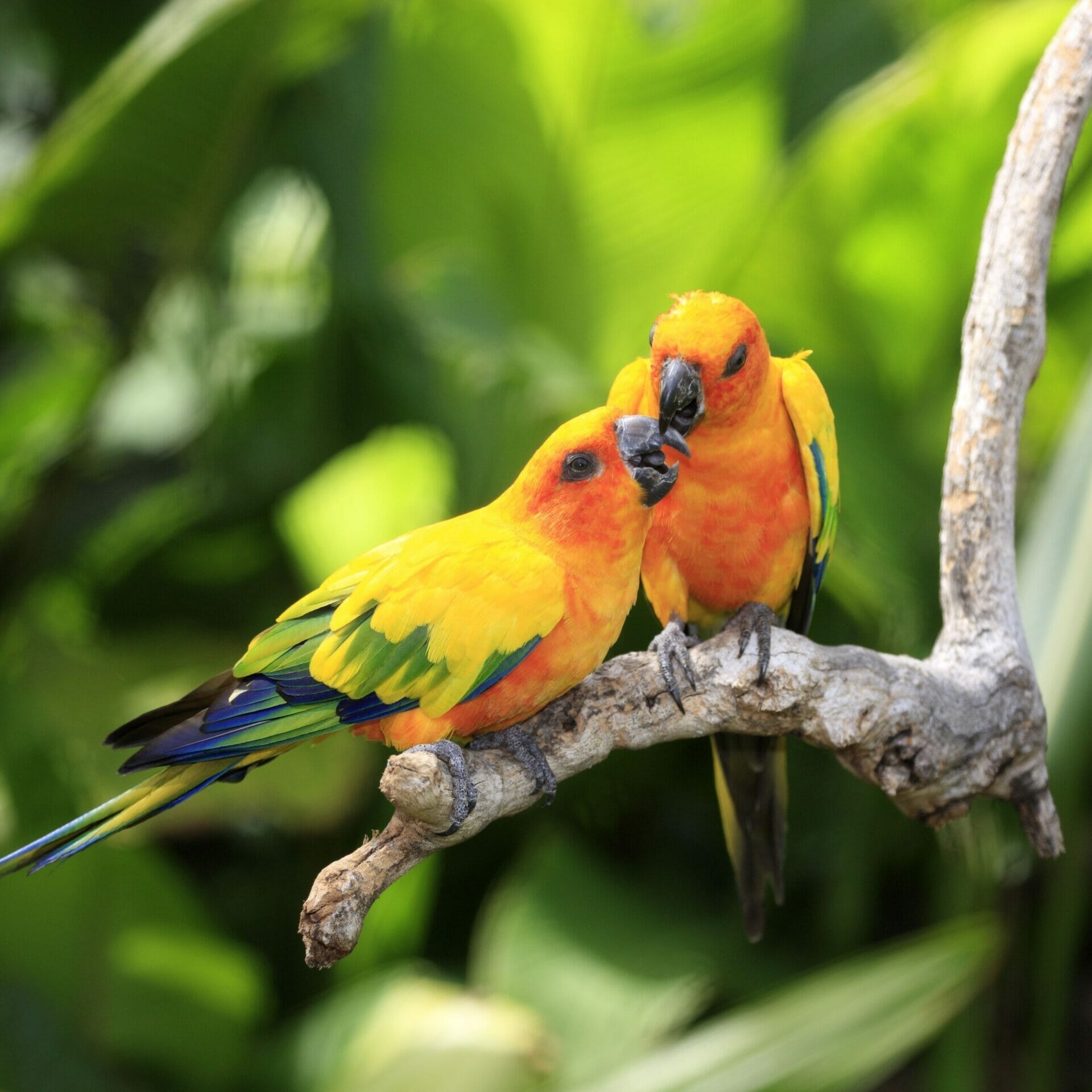
Are Birds Mammals?
More Reasons Why Birds Aren’t Mammals
Wings are another thing that birds possess that mammals lack. Some birds can’t fly. Some birds’ wings, such as the EMU, are only partially functional. bats are the only mammals with proper wings. Because their wings are actually their hands, bats can outmaneuver other birds.
Birds are the only known living therapod dinosaurs. Many scientists consider them to be a type reptile. Their appearance date back to 140 million years ago, which is younger than any reptiles or mammals. Are Birds Mammals? A Definitive Answer
After the asteroid 60 million years ago decimated all other dinosaurs, birds were able to diversify into an amazing array of forms. These range from the smallest hummingbird up to the tallest ostrich.
Their skeletons are another thing that distinguishes avians and mammals. Because birds have hollow bones in their bones, they can fly. Even though the tallest bird is 286 pounds, it still has a lot of flying ability.
What Are the Main Similarities and Differences Between Birds and Mammals?
Too Many Similarities…
Are Birds Mammals? Many people mistakenly believe that birds and mammals share many similarities. Both birds and mammals are warmblooded. They can maintain constant body temperatures and do not require heat from other sources. Are Birds Mammals? A Definitive Answer
Both mammals and birds have similar caloric needs based on their weight. They can also live an active life even in colder temperatures.
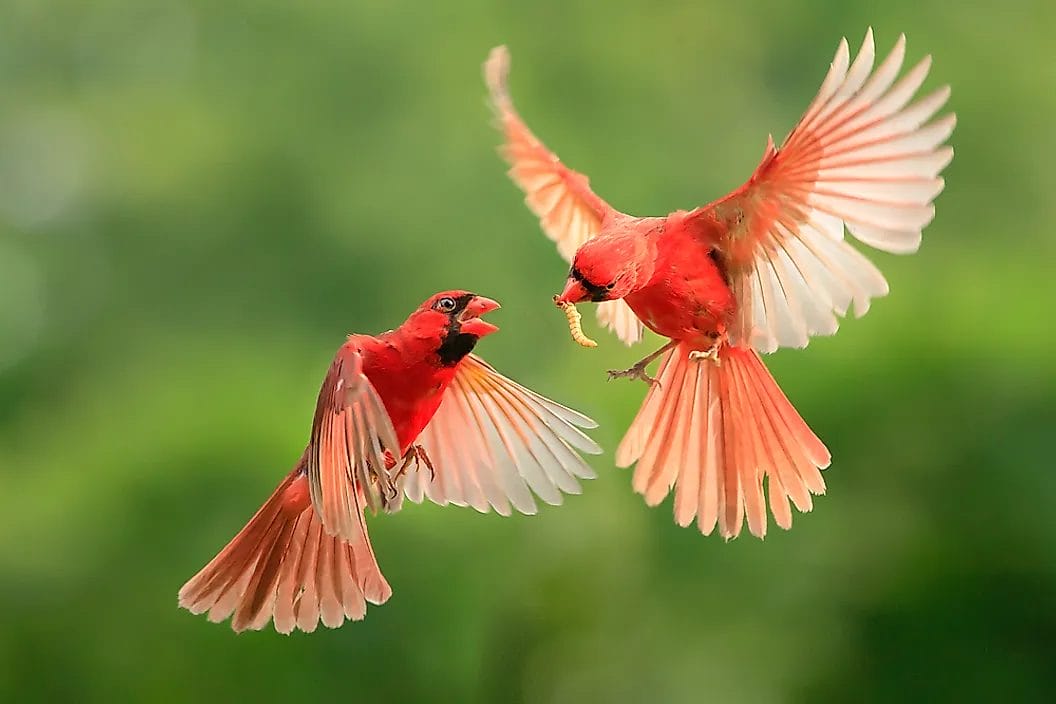
Are Birds Mammals?
Birds and mammals also share a similarity in that they are both vertebrates. They have a backbone and their skeletal system is made of bone. However, there is a crucial difference: birds’ bones are hollow.
This makes them lighter and allows them to fly. Birds and mammals also share incredibly similar hearts.Are Birds Mammals?
Birds need lots of energy to fly. Their hearts have been redesigned to become four-chambered hearts, which are identical to those found in mammals. Both of these animal groups have blood that has both red and white blood cells.
These cells also share the same roles. A common trait shared by mammals and birds is the care they give their young after they are born.Are Birds Mammals?
Parental care in birds and mammals
Parental care among birds and mammals is an amazing feature of animal behavior that demonstrates its significance to the survival and welfare of the young. Parental care encompasses various behaviors that aim to ensure offspring survive. Birds and mammals devote considerable energy to feeding, grooming, and teaching their offspring essential skills for survival.
Birds may build elaborate nests to provide protection for their chicks against predators while providing nourishment as needed. Mammals may provide parental care by nursing their young, teaching social behaviors, and protecting them from potential threats.
While birds and mammals express parental care differently, both species strive to raise healthy offspring that can eventually thrive independently – their respective parental care efforts showcase remarkable dedication and instinctual behavior that drives animal caregiving behaviors.
Feather characteristics in birds and mammals
Feathers are one of the defining features of birds, providing insulation, aerodynamics, and display. Mammals do not possess feathers like birds do but instead possess fur or hair to serve these functions despite any differences. Both these outer coverings play an integral part in thermoregulation and protection of the animal’s thermoregulation needs.
Feathers on birds are typically light, consisting of a central shaft with vanes radiating off both sides, providing structure for flight while also providing camouflage or attracting mates. On the other hand, mammals utilize thicker and denser fur, which provides warmth as well as protection from the elements – both adaptations that allow birds and mammals to thrive in diverse environments.
But there are even more differences
Despite sharing many of these traits, birds and mammals are still two very different animal species. First, feathers cover the birds’ bodies. The feathers of mammals are rare and the majority of mammals have hair.
These feathers are used by birds to fly and keep them warm. Birds are also unique in that they do not have teeth and have beaks. Birds must eat and use their beaks to chop it into smaller pieces.
Birds’ beaks are different from one another. They can adapt to their diet and develop specialized shapes for certain foods. Finally, birds lay eggs. These eggs have hard shells. Although mammals give birth to their offspring, birds hatch their eggs from eggs.
Monotremes are mammals that lay eggs. However, these eggs are much softer than the eggs of other mammals.Are Birds Mammals?
Unique features of avian species
Avian species exhibit many specialized adaptations that enable them to thrive in various environments, from keen vision and hearing capabilities to social behaviors that facilitate foraging, communication, and reproduction strategies. Such characteristics have enabled birds to flourish across diverse habitats worldwide – illustrating both the diversity and resilience of avian life.
One of the hallmarks of avian species is their unique ability to produce milk to feed their young. Unlike mammals, birds don’t carry around their young for sustenance like mammals do – instead, baby birds are fed by their parents until they’re old enough to care for themselves.
Birds stand out from other animals with their hollow bones that allow them to fly. Furthermore, birds feature feathers that provide both insulation and flight capability; also, unlike mammals, they share similar biological traits, including being warm-blooded and breathing air like mammals do.
Examining body structures in birds and mammals
Examining the body structures of birds and mammals reveals an array of fascinating differences and similarities. A notable distinction is that birds do not belong to the mammal class – instead, they belong to an entirely separate class called avians. One notable feature unique to birds is hollow bones with feathers for flight, while all mammals possess unique ways of breathing that produce milk to nourish their young. Yet there remain similarities between birds and mammals, such as both being warm-blooded animals.
Birds exhibit maternal care behaviors similar to mammals, with many species providing their young with nourishment until they can fend for themselves. But unlike mammals, birds do not carry their children around like mammals do – instead keeping them safely nestled within structures for protection and support such as nests. Some even produce milk to nourish their young, as would typically be found with mammals, showing the diversity in bird structures and behaviors that allow them to flourish and reproduce successfully.
FAQs (Frequently Asked Questions)
Are birds endangered?
As with other animals, the species of a bird will determine if it is endangered. European starlings are an example of a bird that is not only of the lowest concern but has also become invasive in certain areas. Other species are critically endangered.
The kakapo is the only parrot that is not flightless in the world. It’s currently confined to a few islands of New Zealand. The ivory-billed woodpecker from North America may be extinct.
Endangered is a category that includes about 1200 bird species. This is due to habitat loss, overhunting, and pollution, as well as other human activities.
How many bird species are there?
Scientists estimate that there are approximately 9800-10,758 species of avian birds. This is more than the 6400 species of mammals currently in existence.
How many years do birds live?
Birds live for a surprising amount of time and, unlike humans, don’t seem to age. According to some reports, the endangered New Zealand parrot, the kakapo can live up to 100 years.
albatrosses and roosters can live into their 60s. Hummingbirds with their faster metabolisms can live up to 14 years. Long-lived birds are bigger, have more chicks, mature faster, live in trees, and can even live on islands.Are Birds Mammals?
Are all birds migratory?
Some birds do not migrate. However, those that do fly thousands of miles may only breed in places far away from their homes and return to the areas where they live and feed. They will not migrate if they are able to live in an area that provides food all year and has a climate that they can tolerate.
The Arctic tern is one of the most prolific migrants of any animal. It breeds in the Arctic, and winters along the coast of Antarctica. Parakeets are an example of a nomadic bird. Although they will fly far to search for food, they will remain within the same region and habitat.
Are birds dangerous?
Are Birds Mammals? While most birds aren’t dangerous to humans, large birds of prey like harpy Eagles can inflict serious injury with their huge talons. A cassowary kick can cause death.
The Australia and New Guinea versions of this flightless bird have the equivalent to a knife blade on their outer toes. It has been known to kill any creature it considers threatening, even humans.
What kind of birds do you have?
Biologists have divided avians into two main categories. These are the passerines, and the non-passerines. Even though passerines are sometimes called songbirds, ravens and crows also belong to this group.
It may be more accurate for passerines to be described as birds that perch while non-passerines are birds that don’t, even though birds of prey and parrots, which can perch well, are also considered non-passerines.Are Birds Mammals?
Why do birds are used by humans?
Are Birds Mammals? Birds are used by humans for many reasons. This is both a blessing as well as a curse. They are used to produce their eggs, meat, and feathers. Milliners used their feathers to decorate their hats, and Ostriches & Egrets almost went extinct. Bird guano can be used as fertilizer. Many birds are kept as pets.
Others, such as falcons or cormorants, are used to aid humans in hunting and fishing. Some birds are also hunted. Sometimes they are hunted to extinction, as with the passenger pigeon. People often just watch birds and put up feeders to attract them.
Are all birds migratory?
Some birds do not migrate. However, those that do fly thousands of miles may only breed in places far away from their homes and return to the areas where they live and feed. They will not migrate if they are able to live in an area that provides food all year and has a climate that they can tolerate.
The Arctic tern is one of the most prolific migrants of any animal. It breeds in the Arctic, and winters along the coast of Antarctica. Parakeets are an example of a nomadic bird. Although they will fly far to search for food, they will remain within the same region and habitat.
Are birds omnivores, herbivores or carnivores?
They’re all of these! They can eat any kind of trash, as long as they are able to adapt to urban living. Seagulls who visit landfills are the same. Carnivores include birds of prey, seabirds like skuas, and bird-of-prey. Penguins consume fish, and any other small marine life that is safe for them to handle. Hummingbirds sip nectar.
Sparrows and Parakeets, grosbeaks, finches all eat seeds. Blackbirds, toucans, Hornbills, tanagers, and vireos all eat fruit. However, some animals will eat both seeds and fruit. It is interesting to note that even herbivorous birds feed their babies insects and worms because they require the fat and protein these foods provide.
Are all birds migratory?
Some birds do not migrate. However, those that do fly thousands of miles may only breed in places far away from their homes and return to the areas where they live and feed. They will not migrate if they are able to live in an area that provides food all year and has a climate that they can tolerate.
The Arctic tern is one of the most prolific migrants of any animal. It breeds in the Arctic, and winters along the coast of Antarctica. Parakeets are an example of a nomadic bird. Although they will fly far to search for food, they will remain within the same region and habitat.
Red-fronted Macaw flying.
While there are certain similarities between mammals and birds, they are very different.
Birds have a complex respiratory system. It takes up most of their body and moves the air around through air sacs.
Milk is the only way female mammals can feed their babies. Mammary glands produce this milk, which is the source of the name mammals.
Feathers are not a characteristic of mammals, and many mammals have hairy skin.
These feathers are used by birds to fly and keep them warm.
While there are some similarities between mammals and birds, they are very different. Birds are not considered mammals, but instead belong to the Aves group.
There are some similarities between mammals and birds, so it’s not surprising that people get confused. However, there are many differences.
Both mammals and aves are two classes of animals. They are further divided into subclasses. These subclasses are more similar than ever. We classify animals by their physical characteristics.
Animals in the Aves category differ from mammals according to these. This article will concentrate on the similarities and differences between birds and mammals.


